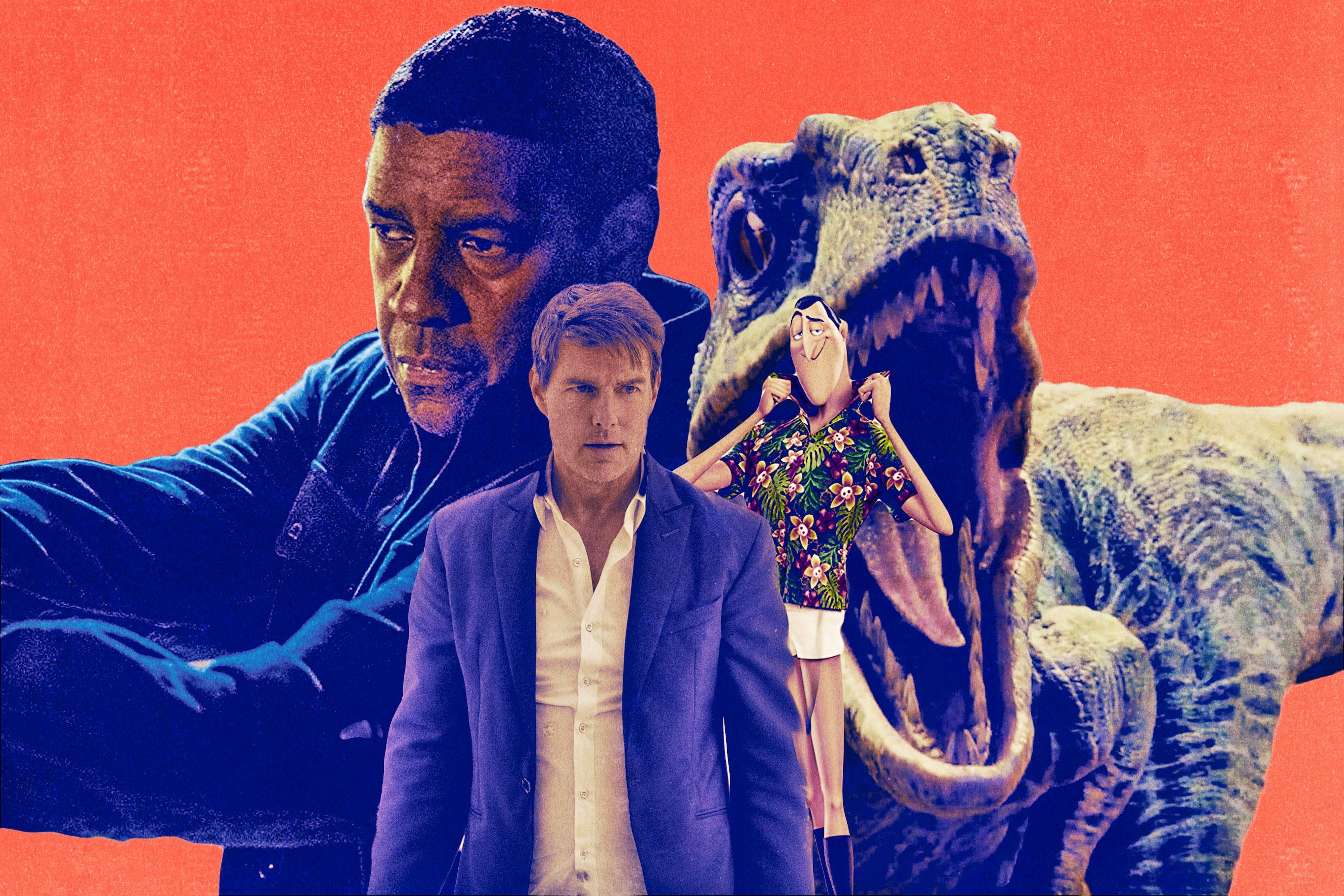
The man with the most consistent track record to conquer the 2018 box office doesn’t work for Marvel, and he doesn’t make Star Wars movies. He isn’t shepherding the DC universe, and he’s never animated for Pixar. He doesn’t scare with dinosaurs, and he’s not toting precious IP. He has, however, created three critically acclaimed TV shows, won three Emmys, and helmed three consecutive installments of one of the most dependable franchises in movies today. His name is Genndy Tartakovsky. Heard of him?
Tartakovsky is the mastermind behind Hotel Transylvania 3: Summer Vacation, Hotel Transylvania 2, and the original recipe, 2012’s Hotel Transylvania. Every three years, Tartakovsky makes a Hotel Transylvania movie, and every three years it makes north of $300 million around the world. Tartakovsky is no hack: he’s the creator of the beloved animated series Samurai Jack and Star Wars: Clone Wars. But he is a successful opportunist. The Hotel Transylvania series is a triumph of old-word studio movie success blended with new-school strategy. It’s the last remnant of Adam Sandler’s once unbreakable bond with Sony, his full-time home for decades before he decamped to make live-action movies for Netflix. But it’s also an expertly and cynically engineered animated kids’ series with only the minimum amount of creativity needed to elevate it beyond straight-to–Cartoon Network fare.
Hotel Transylvania 3 topped the Rock’s Skyscraper in a head-to-head week of release showdown at the beginning of the month, and is still reeling in viewers. This weekend, it came in fourth, with more than $12 million in receipts. Within weeks, it will be among the 10 biggest releases in the U.S. this year. And when that happens, it will be the ninth of the 10 that is a sequel. This weekend, eight of the 10 highest-grossing releases were sequels, too. The other two—Teen Titans Go! To the Movies and Skyscraper—essentially act in the same capacity, as updates on the ongoing DC Comics team’s adventures and Dwayne Johnson’s continuing efforts to defeat inanimate objects. (Many of the eight are comprised of delirious word salads dressed in colons and em dashes, among them Mamma Mia 2: Here We Go Again!, Mission: Impossible — Fallout, and Jurassic World: Fallen Kingdom.) This is unprecedented territory in the history of the box office. During this time period last year, just four of the top 10 were sequels, and two of those—Spider-Man: Homecoming and Wonder Woman—were not directly preceded by a connecting installment to their story. In fact, sequels have never been this necessary to the stability and growth of theatrical movies, which are experiencing an extraordinary 8.3 percent bump in gross. These are heady times for the business. But it’s a perilous game being played.
The evident collapse of MoviePass paired with the sustained success of lesser-light franchises signals a bizarre trend. Let’s look at three: Hotel Transylvania (the third edition has made nearly $120 million in the U.S. in just shy of three weeks), The Equalizer (the sequel crawling to match the $100 million gross of the original), and Sicario (the unexpected follow-up Day of the Soldado has made a respectable $49 million, more than the first). All three of those franchises (I guess that’s what we call them?) were developed and released by Sony. All three originals were surprise hits. All of their follow-ups operate in the same style as their predecessors, but they’re fundamentally linked via the continuity drug that houses like Marvel have laced through their movies. Return business is everything. In Hotel Transylvania 3, Sandler’s Count Dracula gets into some horror high jinks. The Equalizer 2 is just another movie that features Denzel Washington killing bad guys. In Day of the Soldado, drug lords are viciously murdered. There are no Easter eggs or post-credits sequences. There’s no fan community shitposting theories about the creators’ betrayal of the mythology. There’s no high-level critical engagement of these movies. There’s not even all that much external communication in the wider world. But people are seeing them. They are the fabric of the box office. How long can this last?
It’s too early to tell. One of the more discrete and clever lessons of the booming era of comic book movies is to simply make more movies like the ones that people just went to go see. Kevin Feige’s gambit of a long-running, unbreakable chain of moviegoing content strikes fear in the heart of every other movie executive. But it’s aspirational, too. Some of this summer’s sequel oddity is a decade-long master plan finally being aped around town. Some of it is smash-and-grab easy money. Some of it is studios like Paramount, which has been running behind Disney, Sony, and Warner Bros. in recent years, focusing distinctly on what works. After Fallout—a well-received, well-liked six-quel—its biggest release this year will be Bumblebee, a spinoff from the Transformers universe. Disney’s two big hitters are Ralph Breaks the Internet and Mary Poppins Returns. Aquaman and those Fantastic Beasts and Creed II and The Nun and Venom and Goosebumps 2 and The Girl in the Spider’s Web are still to come, too.
We’ve seen all this before, but we’re seeing it again because we keep telling studios it’s what we want. And maybe we do. I saw Fallout for a second time this weekend. For my birthday. Is this a sickness or the cure? More likely, it’s the comfort of distraction. It’s unknowable if this dam will break. In the meantime, we’re getting awfully well-acquainted with the rising water.

